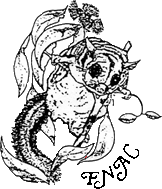Dierk and Rosemary von Behrens kindly invited field naturalists to explore their very special Black Ridge property. The participants enjoyed a really wonderful day. We were privileged indeed.
The size of the property is almost 2,000 ha and has largely escaped clearing, with one side buffering a national park and another a nature reserve. It is covered by dry sclerophyll open forest, with large stands of E. bridgesiana, E. rossii, and E. mannifera, and also Callitris endlicheri (Black Cypress). The understorey is diverse, and was flowering profusely. Many interesting invertebrates were observed and the bird life was rich, with some uncommon species observed, such as the yellow-tufted honeyeater.
The property was not burned from the wildfires of 2019/2020 and so became an important refuge for many species. Significantly, it also provides habitat for koalas. Though no animals were observed, a highlight was the discovery of their “chew trees”. Many of these bark chewings were recent, indicating a healthy sized population still remains.
Dierk and Rosemary also provided us with a unique lunchtime venue, inviting us into the historic settler’s cottage that they’ve had restored.
– John Stein
Dierk and Rosemary kindly invited us to visit their conservation property, Black Ridge, south east of Bredbo. Ten Field Natters made the journey, car pooling in three cars. The property is co-owned by eight people, though for varying reasons, now only a few actually visit the property to weed and maintain it. Our first stop was a short distance from the gate so that Dierk could lead us to an old gum tree that had died due to being ring barked. It is a remarkable old stump: still standing. Dierk and a few others followed the fence line back to check the state of the fence while the stragglers took our time on a more direct route, sighting various plants and insects. I found a few leaf beetles but of particular interest were two Eucalyptus beetles new to me. As well, there were a number of tube spittlebugs. Most interesting was that I was able to find the four stages of this bug: the tubes; spittle; early instar; and adult; and to get a photo of three of these stages in one photo. I also found the several larvae of the Painted Cup Moth. Dierk, always likes to stop at the top of ridge (before the steep descent to the cottage) to show off the view. Some years ago they found a Rosenberg Monitor at a nearby termite nest. By her behaviour, she was obviously depositing
eggs.
As we descended into the valley the vegetation changed from open forest to dense shrubbery with many pea bushes. Where the vegetation once again thinned out lower down we stopped to observe some trees that had recent chewing from koalas. The property has a known koala population and a survey a few years back showed it is one of the richest populations in the area. However, as we drove through this area many of the eucalypts seemed to be dying. Whether the trees were truly dying or whether the leaves had just been attacked is not clear.
Reaching the cottage at the far end of the property, thankfully the trees did not seem to be suffering from the same die-back. The first thing we noticed however, was a small group of feral goats. The cottage is by the Buchans Creek, though there was very little water in it. On our last excursion in 2015, Spotted Pardalotes were nesting in the banks of the creek, but not this time. There had also been orchids but it was a bit later in the year and perhaps there had been more rain. There was certainly more water in the creek.
After lunch we wandered across to a section of mass erosion. This had previously been part of a gold mine but the creek line here now had massive erosion gullies. It was in this general area that orchids had been flowering on the previous visit, but one of my favourite trees was a eucalypt that had grown almost horizontal. There were many birds calling and David Dedenczuk kept a record (see his list below), eventually recording 49 species, including the rare Hooded Robin (and even managed a photo or two).
On the road to the property, we also found a number of White-browed Woodswallows, as well as at least one Masked Woodswallow. These are rare visitors to the area and David explained that they knew it was going to be hot and dry inland this summer, so had flown east to cooler climes.
Thanks to Dierk and Rosemary for again inviting us to visit this property and for showing us around and giving us some history of the conservation efforts being made here.
– Alison Milton
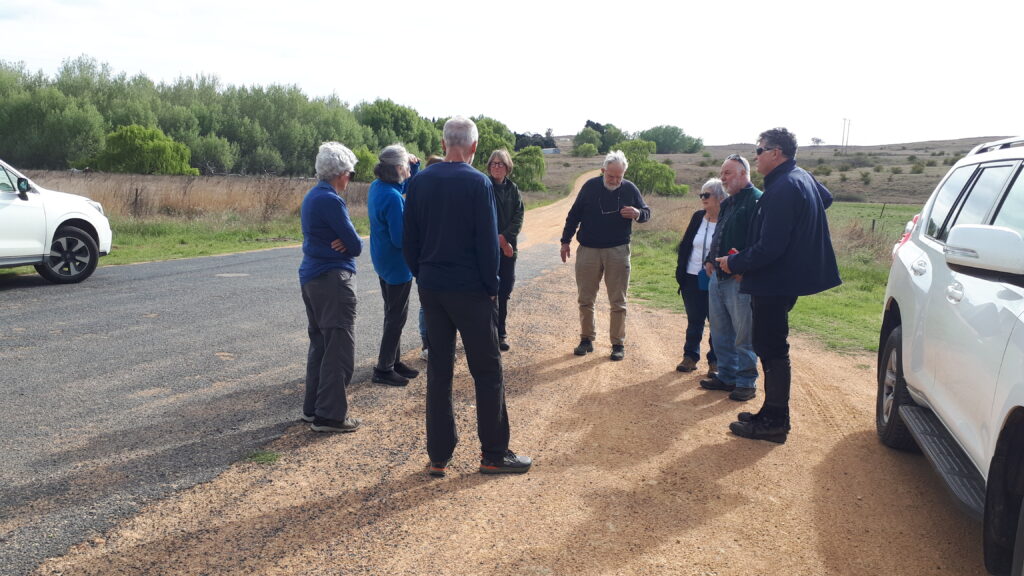
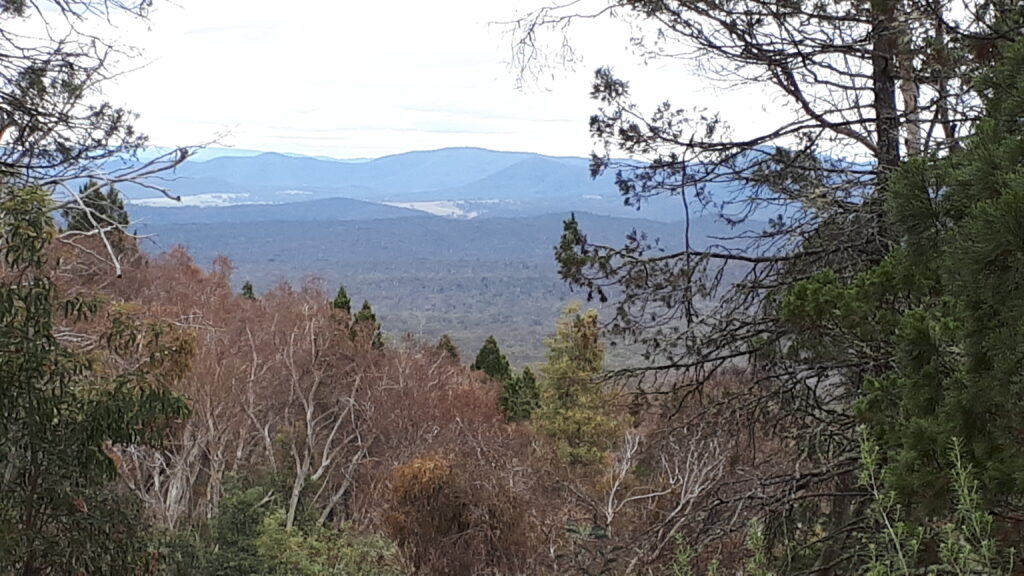
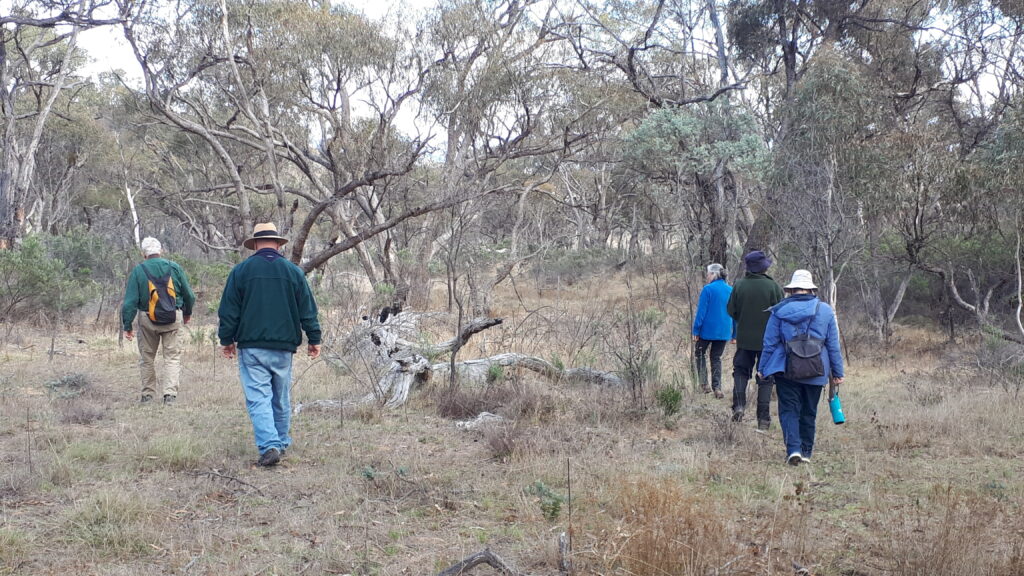
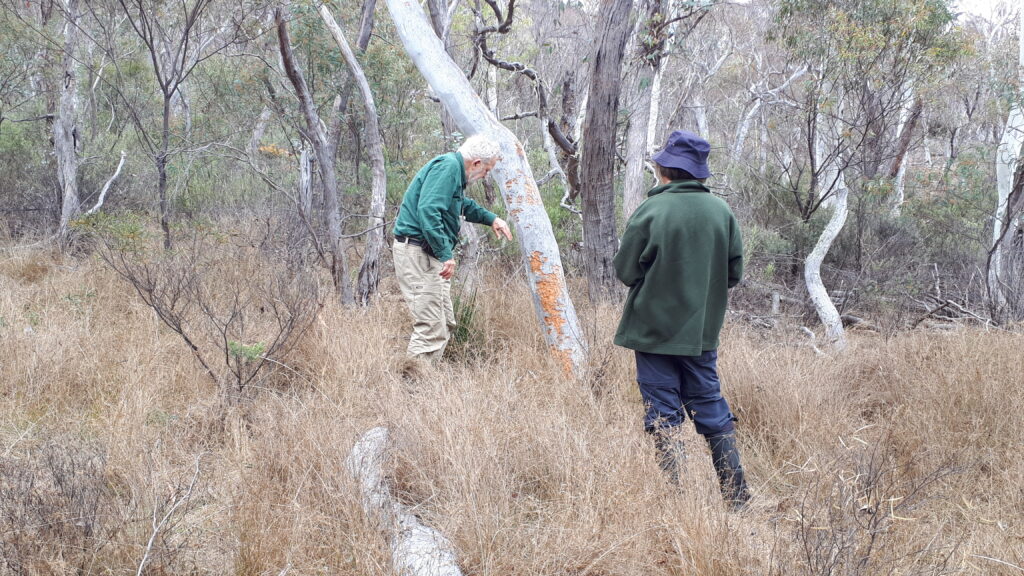
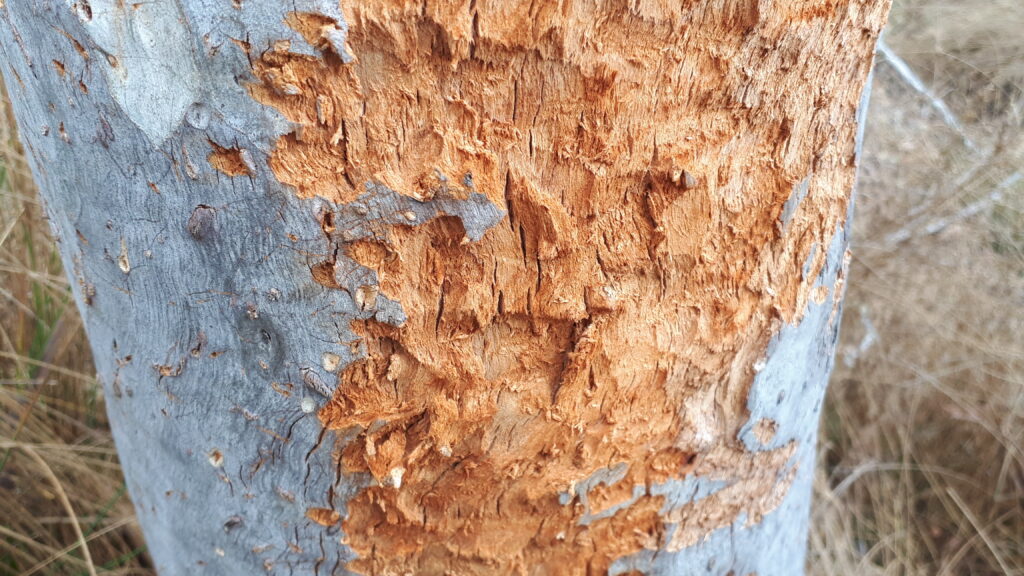
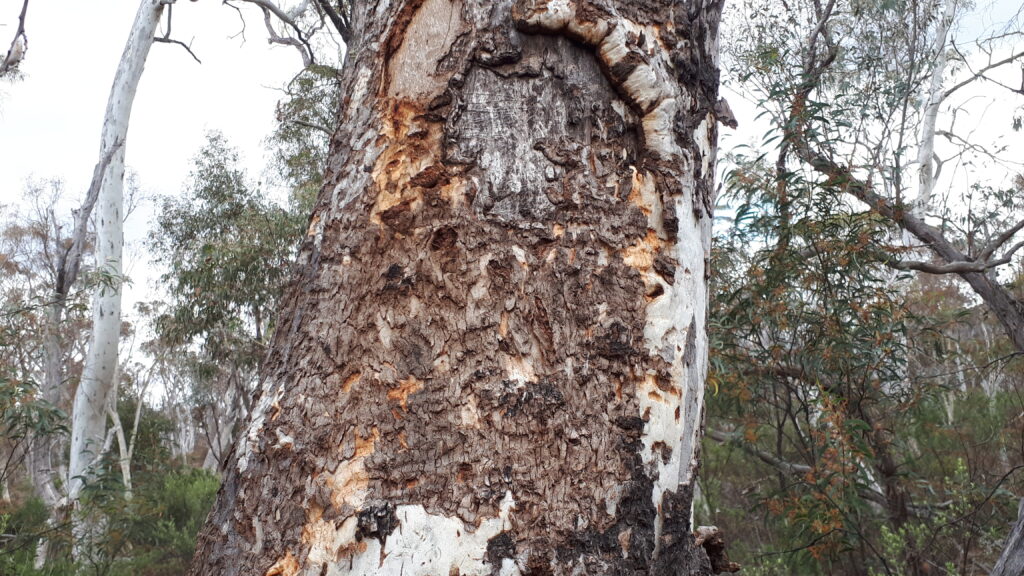
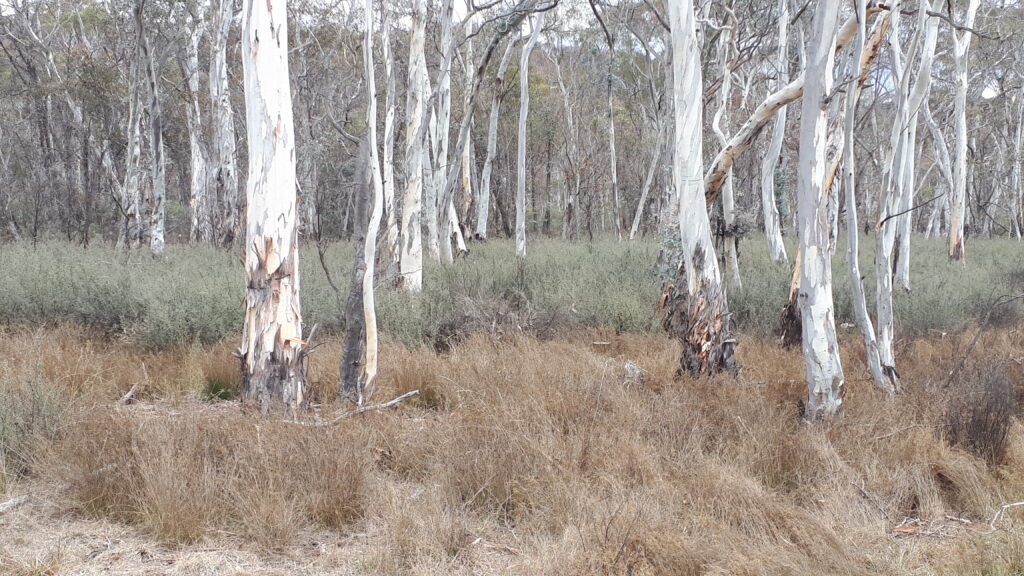
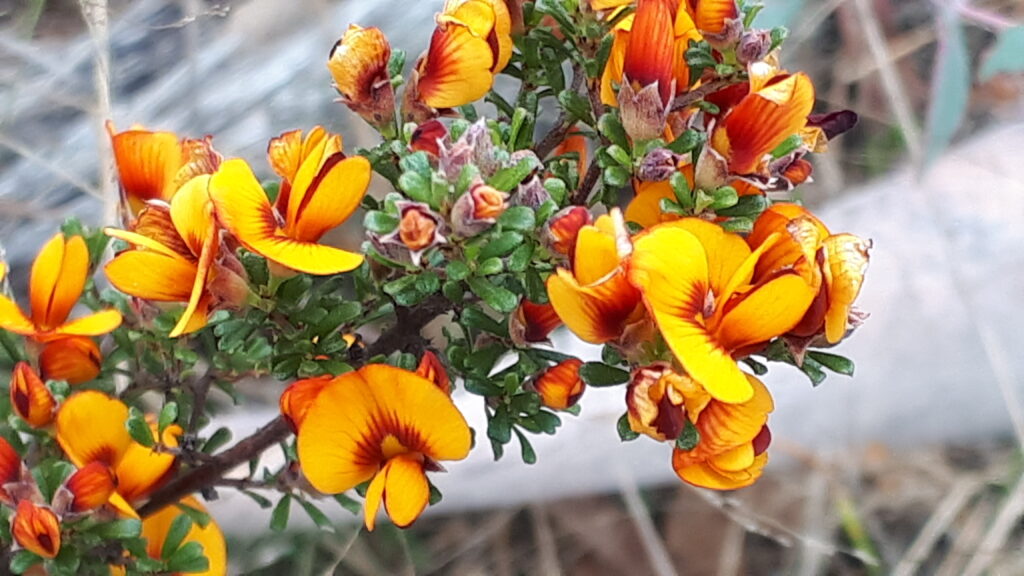

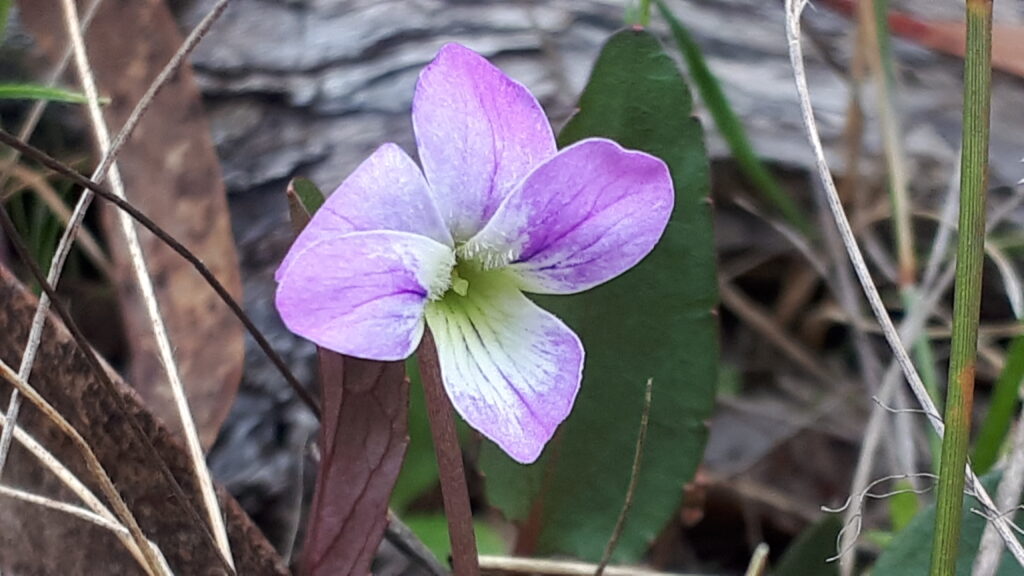

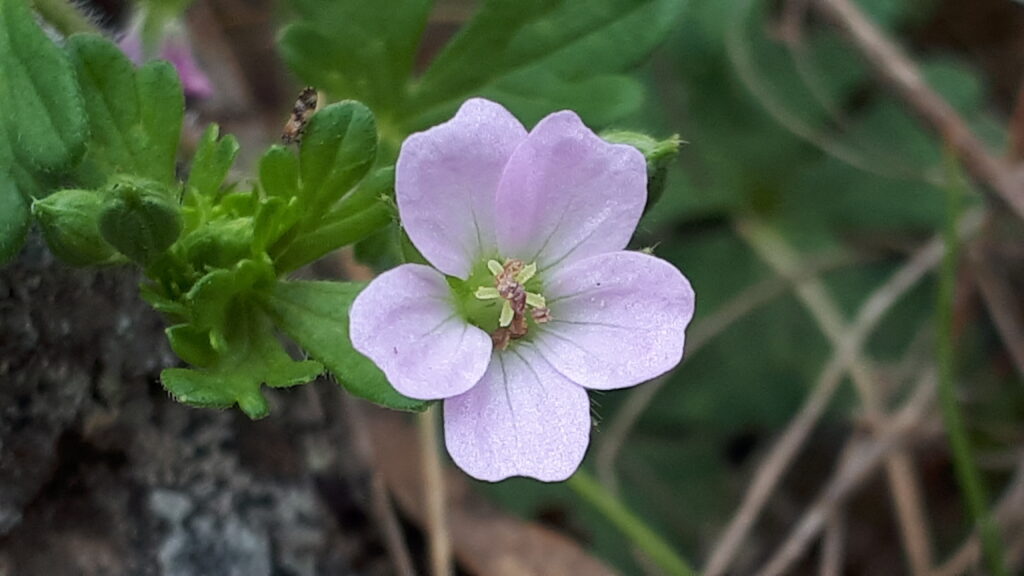
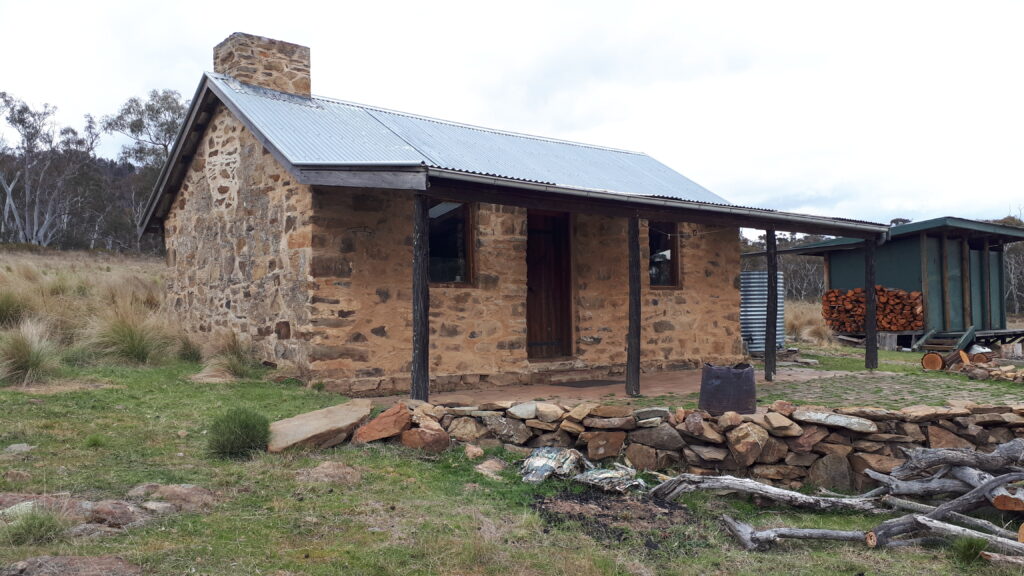
David Dedenczuk ’s bird list
Australian Magpie
Australian Pipit
Australian Raven
Black-faced Cuckooshrike
bronze-cuckoo sp.
Brown Thornbill
Brown-headed Honeyeater
Buff-rumped Thornbill
Crimson Rosella
Dusky Woodswallow
Eastern Rosella
Eastern Spinebill
European Goldfinch
Fairy Martin
Common Starling
Fan-tailed Cuckoo
Galah
Grey Currawong
Grey Fantail
Grey Shrikethrush
Hooded Robin
Laughing Kookaburra
Magpie-lark
Masked Woodswallow
Noisy Miner
Olive-backed Oriole
Pallid Cuckoo
Pied Currawong
Red Wattlebird
Rufous Whistler
Satin Bowerbird
Shining Bronze-Cuckoo
Speckled Warbler
Spotted Pardalote
Striated Pardalote
Striated Thornbill
Superb Fairywren
Varied Sittella
Weebill
Welcome Swallow
White-browed Woodswallow
White-eared Honeyeater
White-naped Honeyeater
White-throated Treecreeper
White-winged Chough
Willie Wagtail
Yellow-faced Honeyeater
Yellow-rumped Thornbill
Yellow-tufted Honeyeater
